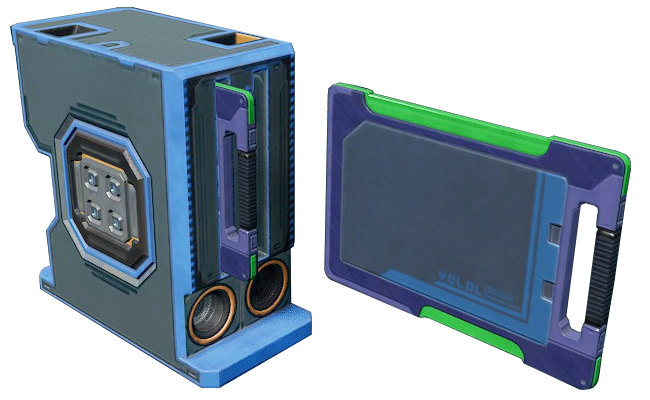Difference between revisions of "User:DustyFB/Sandbox/Memory Relay"
Jump to navigation
Jump to search
| Line 19: | Line 19: | ||
|electricity=Passive | |electricity=Passive | ||
|sockets=4 | |sockets=4 | ||
| | |YOLOLchips=2 | ||
|modInterfaces=2 | |||
<!-- Resources section --> | <!-- Resources section --> | ||
Revision as of 07:19, 10 May 2021
Memory Relay
Input / Output
Sockets 4
Chip Slots 2
Modular Interfaces 2
Construction
Weight: 371.94kgVolume: 41.19kvCRSV Resist: 410
The memory relay is a device used to transfer a data fields from one memory chip to another, allowing for device fields to be linked with different field names.
Memory relays separate sub-networks allowing for one-way broadcasting of variable changes, enabling the creation of modular YOLOL systems.
Basic information
- Memory Relays are connected to two separate data networks via cable sockets at both ends of the device, or by conection to modular device racks.
- One side (left) of the relay acts as the "input" connection.
- The other side (right) acts as the "output" connection.
- When the relay is powered, changes made to device fields on the input chip will propagate to the coresponding device field on the output chip.
- For example the field in position 3 on the input chip will be propagated to the field in position 3 on the output chip, regardless of name.
- Values between networks are not automatically synchronized.
- This means that connected networks may contain different values for similarly named device fields.
- Both sides of the relay must be enabled for device field changes to propagate.
Device fields
The memory relay has two distinct sub-components which have unique device fields, as the left and right side of the device. These device fields can only be accessed by interacting with the appropriate sub-component.
| YOLOL field | Description | Range |
|---|---|---|
| IsMasterEnabled | On / Off, left side | 0 / 1 |
| IsEnabled | On / Off, right side | 0 / 1 |
To learn more about how to use fields, consult these wiki pages:
